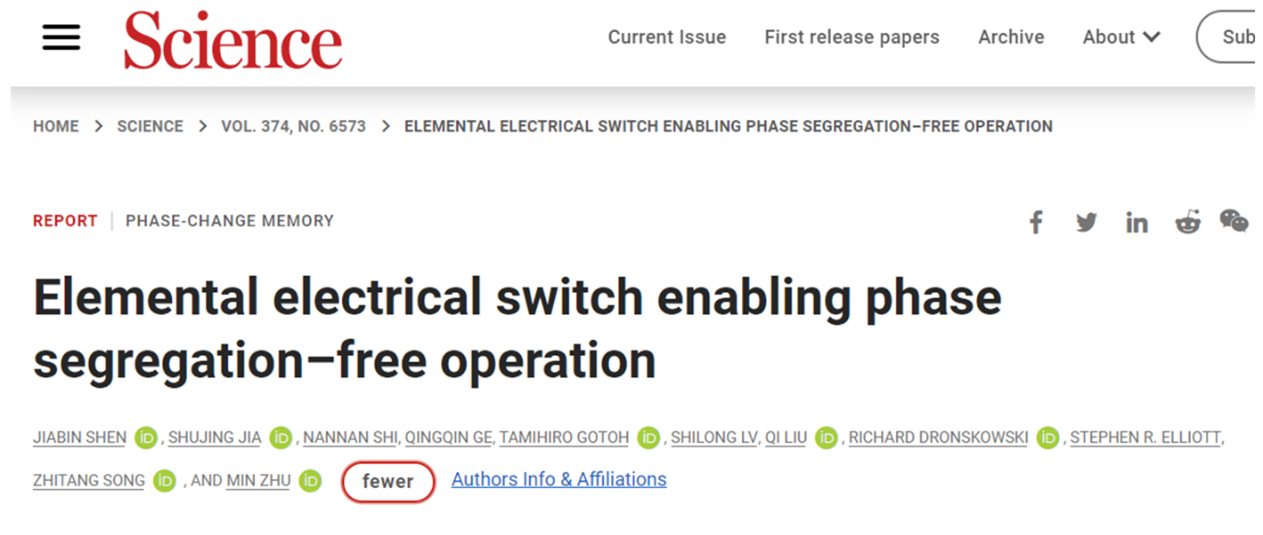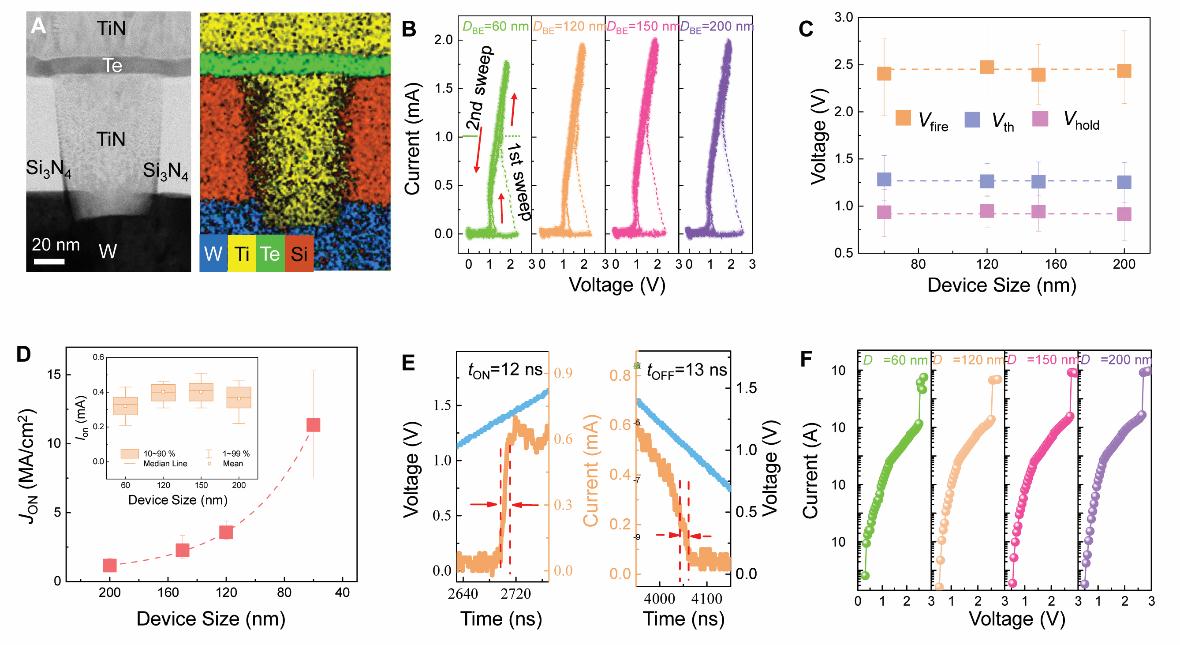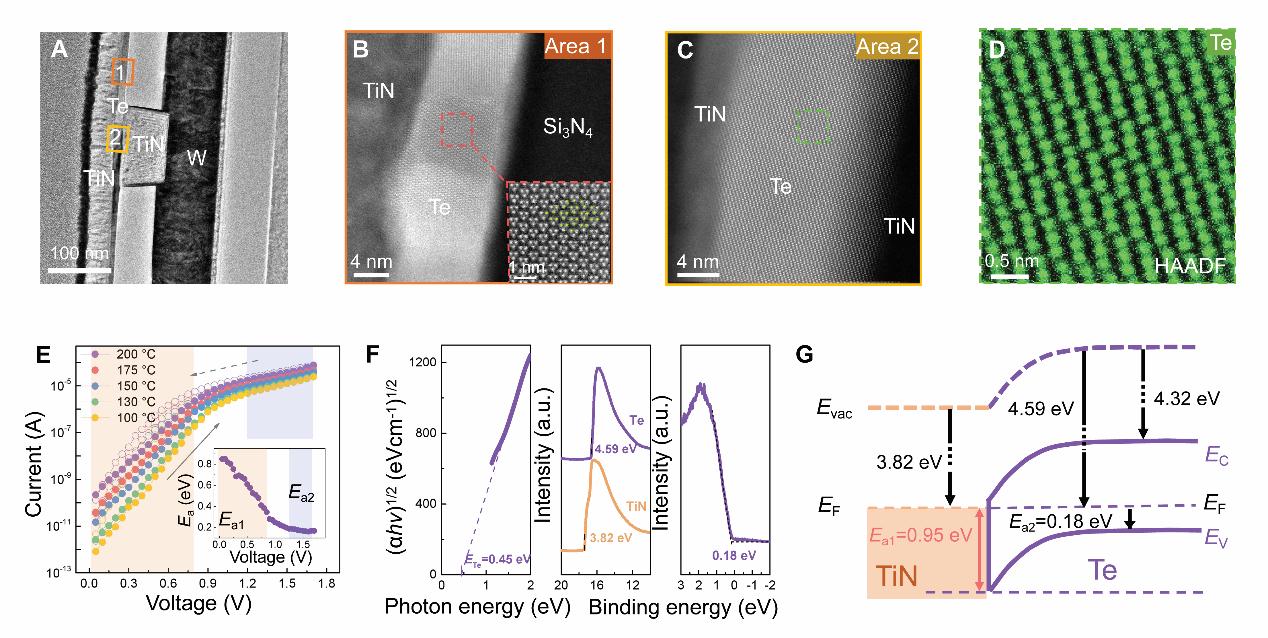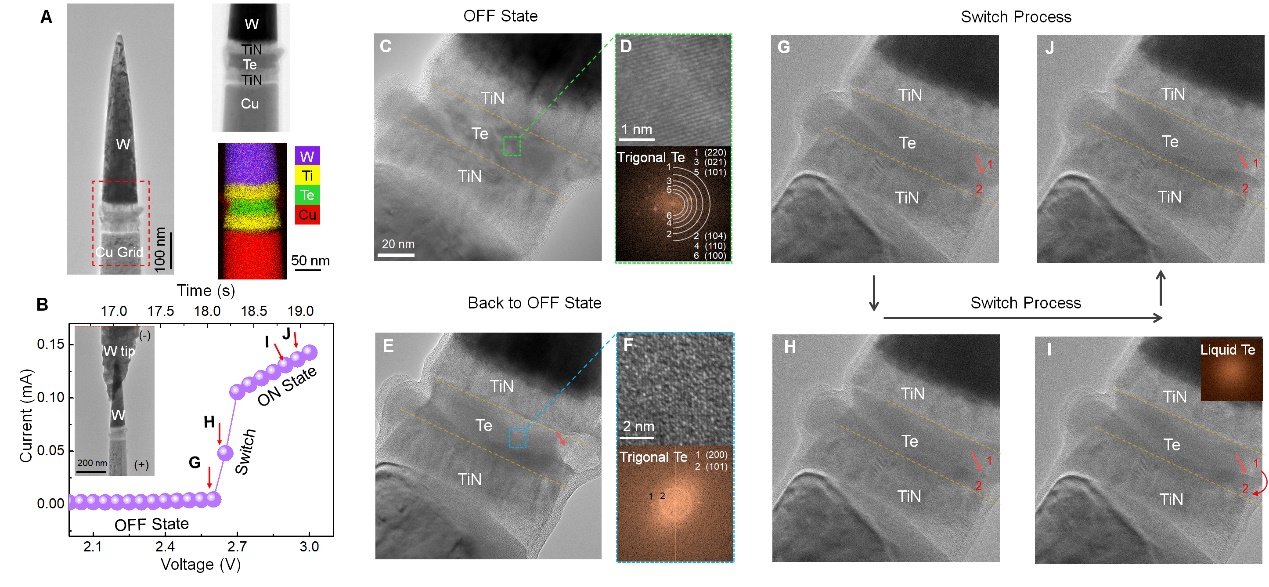
图 1 中科院上海微系统所在Science上发表单质新原理器件文章

图 2 单质Te开关器件结构与性能

图 3 单质Te器件低漏电流物理机制:单质Te与电极形成的高肖特基势垒

图 4 单质Te器件新型开关物理机理:晶态-液态-晶态转变
意大利国家研究委员会微电子和微系统所Raffaella Calarco教授同期在Science (2021, 374, 6573)上发表了评论文章,高度评价道:“沈等人取得的成果是前所未有的,为实现晶态单质开关器件提供了稳健的方法,此单质开关为3D Xpoint架构提供了新的视角”(What has been achieved by Shen et al., is unprecedented and provides a robust method to realize crystalline elemental switches that bear new perspectives for 3D Xpoint architectures)。
该研究工作得到复旦大学刘琦教授、剑桥大学Stephen R. Elliott教授、日本群马大学Tamihiro Gotoh教授、德国亚琛工业大学Richard Dronskowski教授、赛默飞世尔科技中国有限公司史楠楠和葛青亲博士的大力支持。相关工作得到了国家重点研发项目(2017YFB0206101)、中科院先导B(XDB44010000)和上海科技启明星项目(21QA1410800)的资助。
文章链接:https://www.science.org/doi/10.1126/science.abi6332
评论文章链接:https://www.science.org/doi/10.1126/science.abm7316
| 附件下载: |
